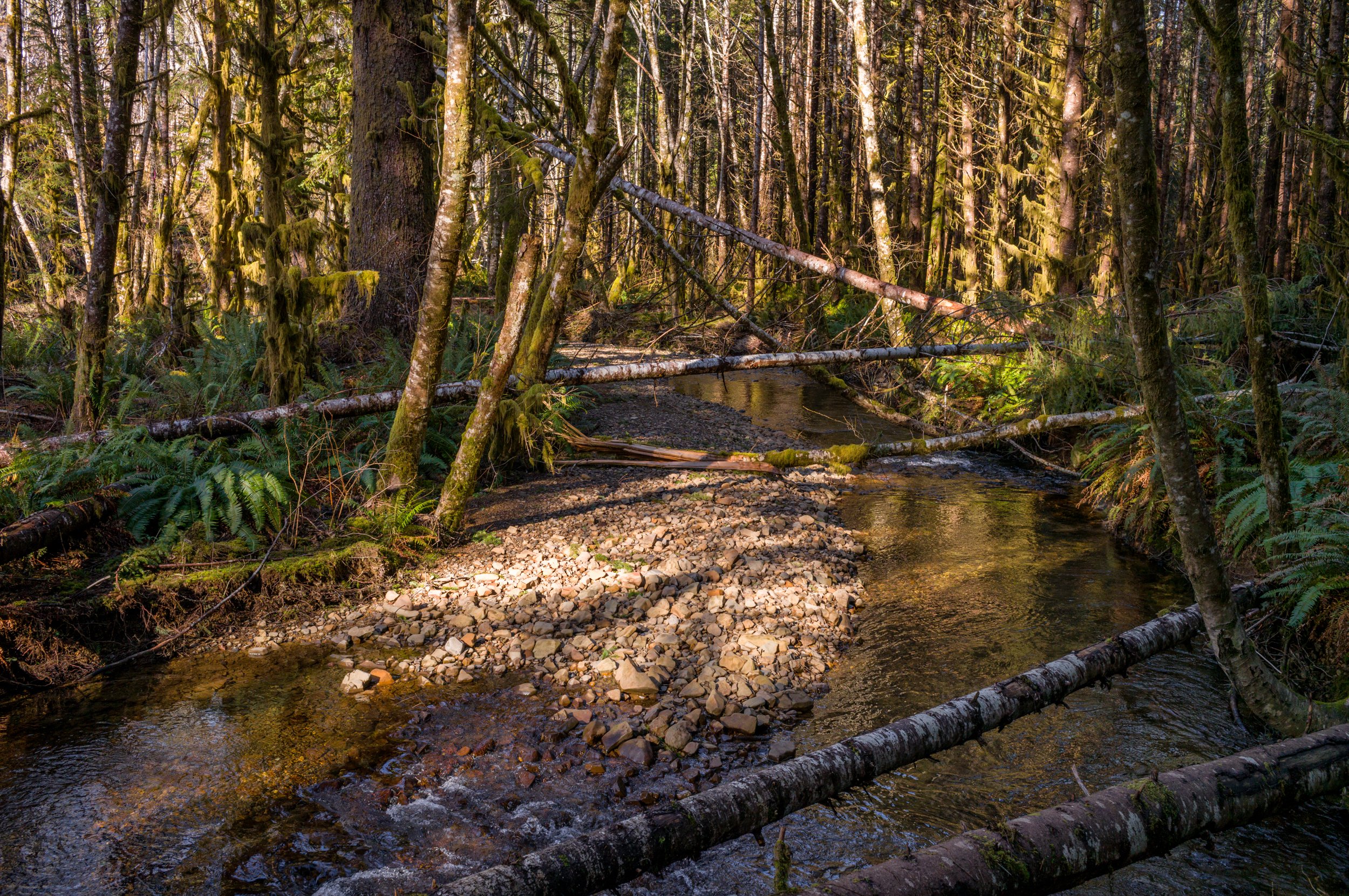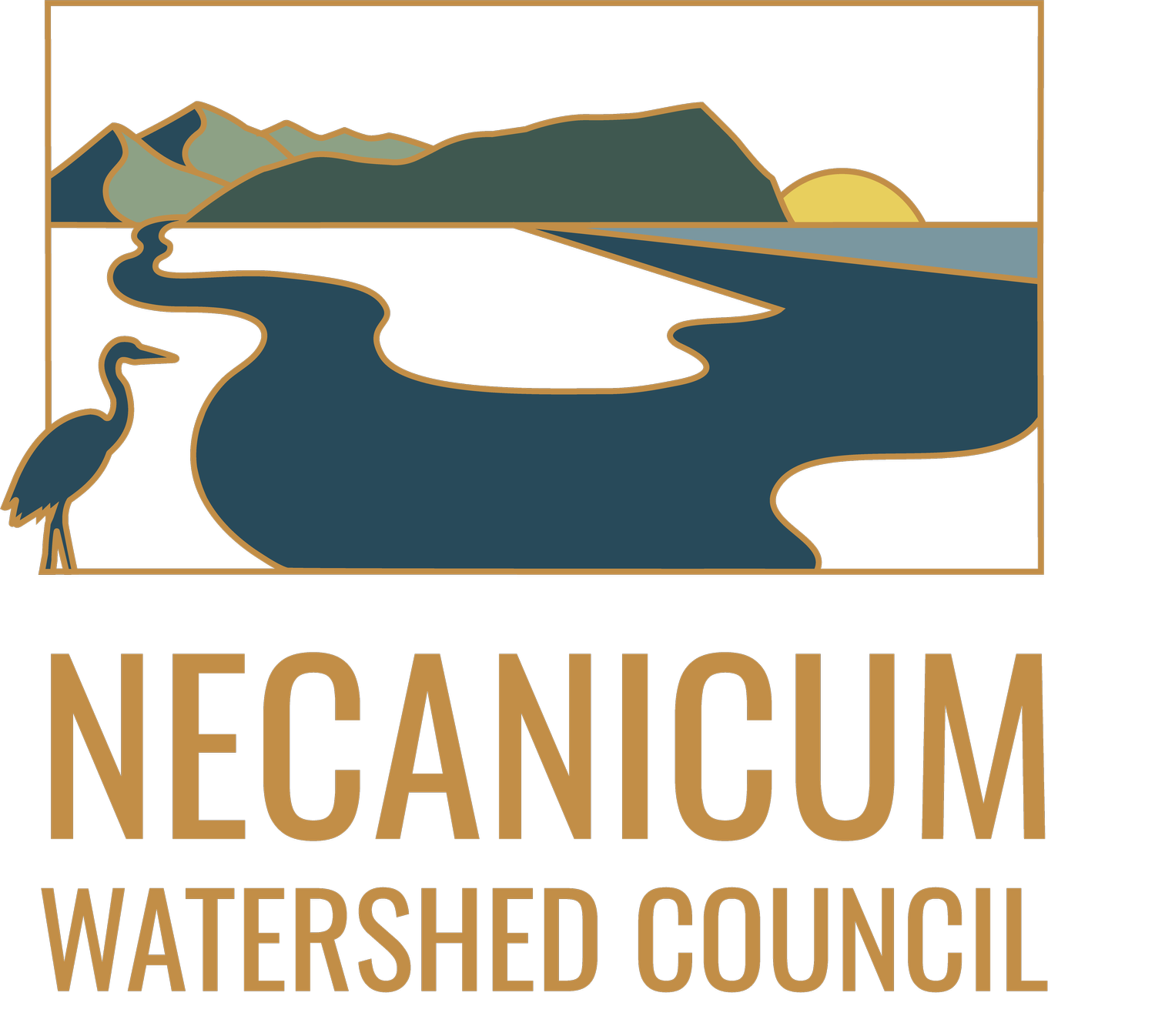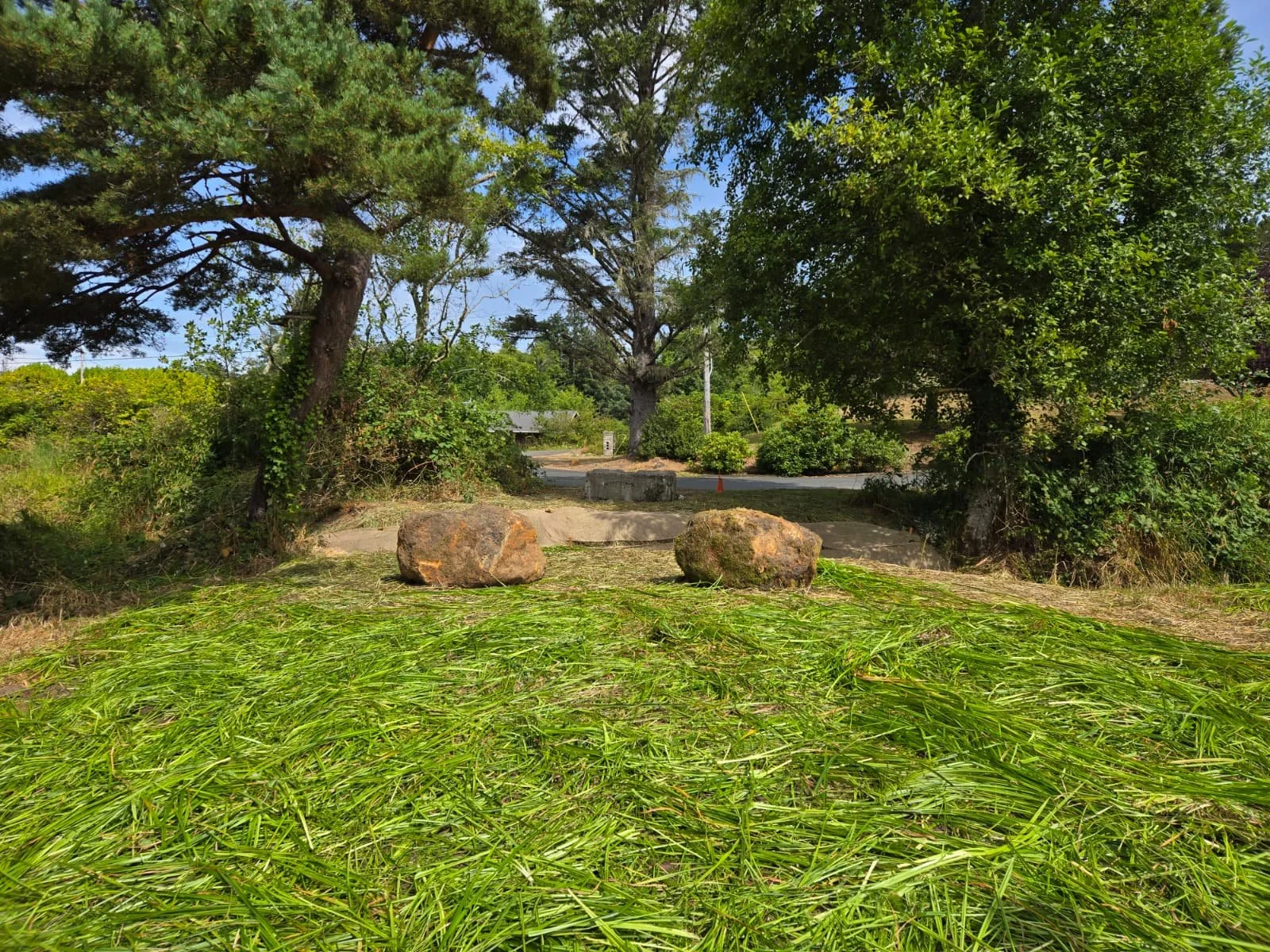
Restoring the Necanicum Basin one project at a time
Restoration Projects
Explore some of the past and present habitat restoration work that we've tackled, including culvert replacements, riparian plantings, pollinator work, stream habitat enhancements, and more.
Current Projects
Middle Necanicum Tributary Fish Passage Phase I
-
Timeline: In progress
Decommissioning and removal of a timber road on a high quality fish stream. Placement of two large wood structures as well as replanting of riparian banks where road is removed. Reconnection of nearly 1.6-miles of fully volitional salmonid habitat.
Funders: Oregon Watershed Enhancement Board, Nuveen Natural Capital
Cohoho Habitat Rafts in Tribal Waters
-
Timeline: In progress
Through generous partnerships and donations in our community, we have secured ~300 Christmas trees that will be used for tree rafts to be released on the Necanicum River. These trees provide important seasonal habitat, attract prey for fish moving upstream and assist with nutrient cycling downstream.
Funder: Oregon Watershed Enhancement Board
Unlocking Coho Habitat on Thompson Creek
-
Timeline: In progress
Removal of road fill on the Thompson Creek system (up the foot of Thompson Falls) and riparian zone planting. Improvement of access to 0.5-miles of fully volitional salmonid habitat.
Funders: Oregon Watershed Enhancement Board and Oregon Wildlife Foundation.
Grindy Creek Tributary Fish Passage, LWD and Riparian Habitat Improvements
-
Timeline: In progress
Removal of two undersized culverts and full decommissioning of two harvest roads to improve access to 1.7 miles of fish habitat. Riparian planting and large woody debris structure placement will be added to improve stream complexity.
Funders: Oregon Watershed Enhancement Board, Nuveen Natural Capital.
Johnson Creek Fish Passage, LWD and Habitat Enhancement
-
Timeline: In progress
Replacement of a 7' culvert that is undersized for the stream bankfull width of 13' and placement of a bridge that meets the Oregon Department of Fish and Wildlife fish passage criteria. Riparian planting and large woody debris structure placement will be added to improve fish habitat.
Funders: Oregon Watershed Enhancement Board, Nuveen Natural Capital
Thompson Creek Technical Assistance Phase I
-
Timeline: In progress
NWC staff will conduct in-depth partner collaboration meetings, landowner and stakeholder outreach, and contractor oversight during habitat surveying and alternatives analysis and designs. The habitat surveying will produce alternatives analyses and a 30% design of the preferred alternative for Thompson Creek restoration.
Funders: Oregon Watershed Enhancement Board.
Past Projects
Lower Coho Creek Fish Passage
-
Timeline: Completed in 2024
Replacing two ~30" pipe culverts with a 19' open bottom, multiplate arch and natural stream simulation through the stretch of the culvert passing. Coho Creek is a winter steelhead and Coho bearing stream. The replacement of the current culvert system connected the lower portion of Coho Creek with the upper creek culvert replacement led by the watershed council nearly a decade ago. Coho Creek has over 0.75 miles of newly connected fish passable habitat.
Funders: Oregon Department of Fish and Wildlife, Oregon Watershed Enhancement Board, City of Seaside, Pacific Lamprey Conservation Initiative
Circle Creek
-
Timeline: Completed in 2012
Information: Over 55 pieces of large wood were installed along a single reach of Circle Creek in Seaside, Oregon.
Dichter Road Passage & Stream Enhancement
-
Timeline: Completed in 2012
Information: Replaced a 6-ft wide perched culvert with a 16-ft wide steel bridge. An additional culvert located above the initial project site was also removed, at the landowner’s expense. Additionally, 80 pieces of large wood were placed within a 0.9 mile reach up- and down-stream of the road crossing to increase pool habitat and channel complexity, increase winter/off-channel refuge habitat, dissipate stream energy and retain bedload materials, and distribute fine sediments. A variety of native conifers (Sitka spruce, western hemlock and western red cedar) were planted throughout the project area to increase the potential of future LWD recruitment and the change the composition of the riparian area from hardwood dominated to mixed conifer/hardwood.
Upper Coho Creek Culvert Replacement
-
Timeline: Completed in 2012
Underneath Spruce Rd., a 20-foot tall ridgeline road to the new school complex, a 5-foot pipe culvert was replaced with a 19' open bottom arch culvert with reconstructed stream simulation. The replacement of this culvert was phase I of a multi-phase Coho Creek restoration plan.
Neitzel Farm Restoration
-
Timeline: Completed in 2012
Information: The NWC planted approximately five acres of riparian, floodplain, and wetland areas. Exclosures were installed around Cascara and crabapple plants to protect from grazing. Plantings produced a substantial increase in functional wetlands and floodplain.
Gearhart Pollinator Project
-
Timeline: In progress
Invasive species removal and pollinator plantings along ~1.2 miles of trail. Species removed include english ivy, holly, himalayan blackberry, etc.. Pollinator patches include Douglas aster, Lupine, Camas and Goldenrod. Patch habitats are within 400-ft of Neacoxie Creek. The project is interested in expanding patch habitats to adjacent properties not directly on trail.
Funders: Oregon Wildlife Foundation, Oregon Conservation and Recreation Fund, Sou’Wester Garden Club, City of Gearhart
Bergsvik Creek Large Wood Placement
-
Timeline: Completed in 2021
Over a mile of enhanced salmonid habitat on the upper Bergsvik Creek reach near Highway-53. Logjams, some with root wads still in-tact, and strategically anchored Christmas trees, have been placed to greatly increase the quality of habitat for spawning Coho and Steelhead.
Necanicum Riparian Restoration & Tree Release
-
Timeline: Completed in 2012
Information: Invasive species removal (knotweed, blackberry, ivy and others) and replacement with spruce, cedar, big leaf maple, etc. on nearly 8,000’ of streamside frontage. Plantings also included crabapple, willow, twinberry and more.
Upper Circle Creek Storm/Floodplain Restoration & Fish Passage Improvement
-
Timeline: Completed in 2012
Information: 8 road stream crossings were removed, 3 permanently and the other 3 were replaced with culverts meeting state fish passage standards. Over 300 logs were installed at a 3 log/100 lineal feet of stream to improve habitat and fluvial morphology. Native plantings included nearly 400 Sitka spruce and wilding Scirpus mircoarpus and 5100 lineal feet of road obliteration was completed.
Hawley Creek Fish Passage and Habitat Improvement
-
Timeline: Completed in 2007
Information: Five road stream crossings were removed, four permanently. A bottomless arch culvert was installed in the final crossing. Over 2,500 feet of forest road system were obliterated and prepared for revegetation. Over 100 pieces of large wood were installed within the floodplain. 150’ of stream bank was sloped and reshaped as well as breaching of a man-made dike allowing for connectivity of the former floodplain. Wetlands areas were created as well as ample native vegetation installation.
Joe Creek Restoration
-
Timeline: Completed in 2011
Information: Distributed large wood installations at nine different sites along 0.4-miles of stream reach. 37 key pieces (34 of which had rootwads) and 17 secondary pieces (12 with rootwads) were placed. In addition around 550 conifers were planted along the riparian area to encourage future wood recruitment.
Arresting Policeman’s Helmet
-
Timeline: Completed in 2020
Information: In partnership with the North Coast Land Conservancy, the NWC conducted a 3-year treatment project for policeman’s helmet. The project incorporated a large-scale outreach effort to engage landowners and partners. Over the project’s life 7 river miles and 152 acres of policeman’s helmet were treated with 35 different landowners participating in removal or surveying. Almost 3,000 plants were installed in place of the removed policeman’s helmet.
South Fork Necanicum Fish Passage and
In-stream Habitat Improvement
-
Timeline: Completed in 2010
Information: Restoration activities included the addition of large wood (56 key logs w/rootwad attached, 3 key logs w/o rootwad, and 34 additional non-key pieces distributed among 13 sites) through a 0.75 mile reach of two tributaries), as well as the replacement of an impassable culvert with a prefabricated concrete bridge.
Shangrila Wetlands Vegetation Enhancement
-
Timeline: Completed in 2025
Invasive species removal and construction of vegetation enclosures that will include both young and mature wetlands-specific species. This project is designed to increase the functionality of the Shangrila Wetlands complex by adding plant biodiversity and density to the wetlands border with the Mill Ponds habitat in Seaside. The wetlands system is adjacent to the fish bearing Shangrila Creek, a tributary of the Neawanna Estuary and Necanicum system.
Funders: Oregon Watershed Enhancement Board


